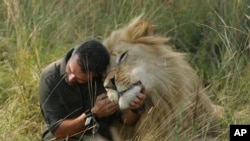That tailoff has seen numbers shrink from 493 to 275, largely owing to growing conflict between humans and animals in the wild, the ministry said.
"Lions have declined sharply due to retaliatory killings, resulting from human-wildlife conflicts," the minister, Tom Butime, stated as he released a national tourism report.
"Lion numbers have fallen from a peak of 493 in 2014 to 275 lions in 2023."
However, Butime said he was pleased to announce that some other species have seen their numbers rise, including gorillas —up from 302 in the early 2000s to 459 by 2022.
Uganda, in East Africa, is reputed for enjoying some of the world's richest biodiversity.
Most of its lions (224) inhabit the park at Murchison Falls, although numbers are down to 39 in Queen Elizabeth National Park, where the lions are famed for their tree-climbing ability.
That dropoff follows several apparent cases of poisoning — nine in 2022, six in 2021 and 11 in 2018.
But investigations into who was responsible —cattle breeders seeking to limit attacks on their stock are suspected, as well as poachers — have run into the sand.
Four poachers were arrested in 2021 when four lions' heads and body parts were discovered along with bottles containing poisonous substances, spears, a machete and a hunting net.
In a report last year, the government warned of threats to lions and chimpanzees. In contrast, Uganda's elephant population has nearly quadrupled to 7,975 over the past four decades.
In that time, the number of giraffes has increased sixfold to 2,072 and the number of buffaloes almost doubled to more than 44,000.
National parks are a key driver of tourism in Uganda, accounting for 7.6 percent of GDP, according to the ministry of finance.

Forum